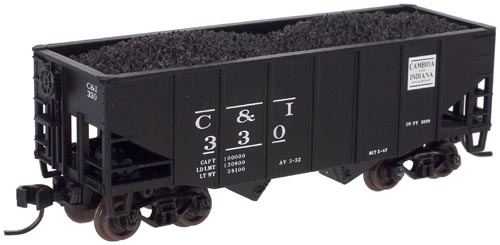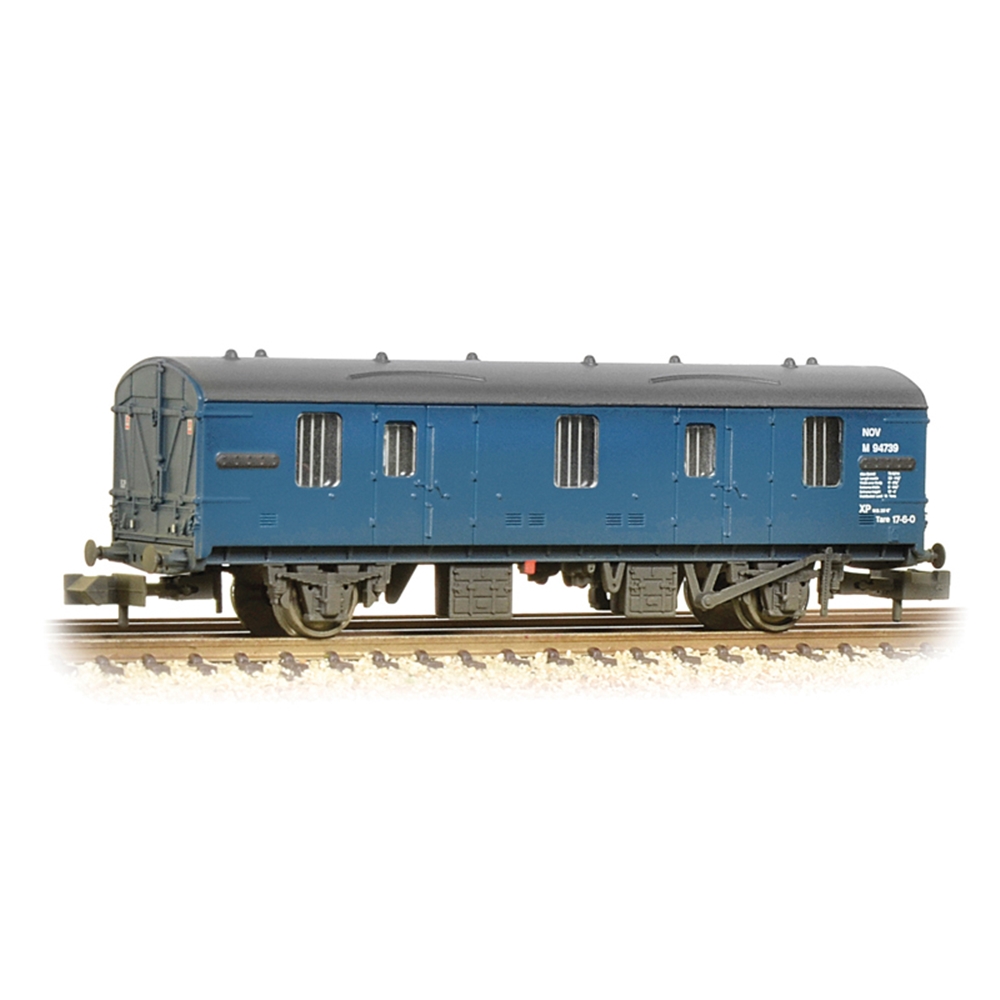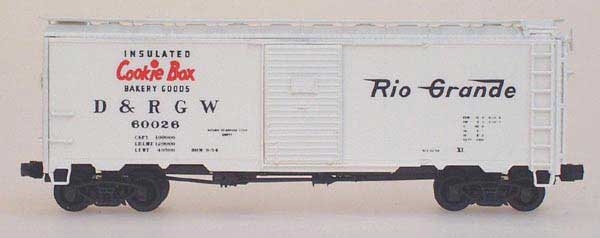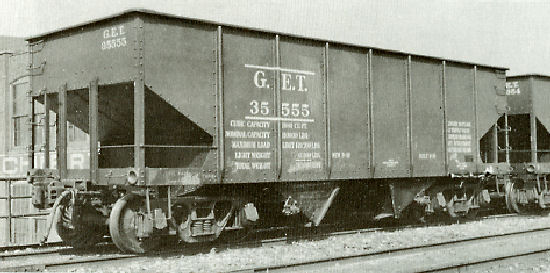Prototype History: The USRA 55-Ton hopper was designed by the United States Railway Administration during World War I as a standardized hopper to be used by all railroads in order to aid the war effort. After WWI many railroads continued to use the USRA 55-Ton hoppers, as well as build many thousands more clones. The USRA hopper was in use on North American railroads from 1918 until the 1970’s
Road Name History: 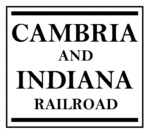 The Cambria & Indiana was born in 1911 with the renaming of the Blacklick & Yellow Creek Railroad. The line ran in its namesake counties in Pennsylvania. Built as a lumber hauler, coal quickly took over as the primary commodity. In the 1930s and 40s, the C&I was the richest railroad per mile of track in the country but when oil and gas became more popular for home heating, some of this traffic disappeared. C&I had always owned many more hoppers than they could possibly load on their own line. This large fleet was rented to other railroads to load where needed. In 1950, the railroad was sold to Bethlehem Steel who could then keep their own freight car production lines busy between orders building hoppers for the C&I. Those hoppers could then be rented out. In 1963, Bethlehem Steel opened a new coal mine on the line which fed considerable traffic to the C&I for the next 31 years. The closure of this last mine on the C&I led to the closure of the railroad in 1994. Like the Conemaugh & Black Lick, C&I eventually adopted the yellow and black paint scheme used for all of Bethlehem Steel's shortlines.
The Cambria & Indiana was born in 1911 with the renaming of the Blacklick & Yellow Creek Railroad. The line ran in its namesake counties in Pennsylvania. Built as a lumber hauler, coal quickly took over as the primary commodity. In the 1930s and 40s, the C&I was the richest railroad per mile of track in the country but when oil and gas became more popular for home heating, some of this traffic disappeared. C&I had always owned many more hoppers than they could possibly load on their own line. This large fleet was rented to other railroads to load where needed. In 1950, the railroad was sold to Bethlehem Steel who could then keep their own freight car production lines busy between orders building hoppers for the C&I. Those hoppers could then be rented out. In 1963, Bethlehem Steel opened a new coal mine on the line which fed considerable traffic to the C&I for the next 31 years. The closure of this last mine on the C&I led to the closure of the railroad in 1994. Like the Conemaugh & Black Lick, C&I eventually adopted the yellow and black paint scheme used for all of Bethlehem Steel's shortlines.

Brand/Importer Information: In 1924 Stephan Schaffan, Sr. founded the Atlas Tool Company in Newark, New Jersey. In 1933 his son, Stephan Schaffan, Jr., came to work for his father at the age of sixteen. Steve Jr. built model airplanes as a hobby and frequented a local hobby shop. Being an enterprising young man, he would often ask the owner if there was anything he could do to earn some extra spending money. Tired of listening to his requests, the hobby-store owner threw some model railroad track parts his way and said, "Here, see if you can improve on this".
In those days, railroad modelers had to assemble and build everything from scratch. Steve Jr. created a "switch kit" which sold so well, that the entire family worked on them in the basement at night, while doing business as usual in the machine shop during the day.
Subsequently, Steve Jr. engineered the stapling of rail to fiber track, along with inventing the first practical rail joiner and pre-assembled turnouts and flexible track. All of these products, and more, helped to popularize model railroading and assisted in the creation of a mass-market hobby. The budding entrepreneur quickly outgrew the limitations of a basement and small garage operation. Realizing they could actually make a living selling track and related products, Steve and his father had the first factory built in Hillside, New Jersey at 413 Florence Avenue in 1947. On September 30, 1949, the Atlas Tool Company was officially incorporated as a New Jersey company.
In 1985, Steve was honored posthumously for his inventions by the Model Railroad Industry Association and was inducted into the Model Railroad Industry Hall of Fame in Baltimore, Maryland. In addition, Steve was nominated and entered into the National Model Railroad Association Pioneers of Model Railroading in 1995.
In the early 1990s, the Atlas Tool Company changed its name to Atlas Model Railroad Company, Inc.
In those days, railroad modelers had to assemble and build everything from scratch. Steve Jr. created a "switch kit" which sold so well, that the entire family worked on them in the basement at night, while doing business as usual in the machine shop during the day.
Subsequently, Steve Jr. engineered the stapling of rail to fiber track, along with inventing the first practical rail joiner and pre-assembled turnouts and flexible track. All of these products, and more, helped to popularize model railroading and assisted in the creation of a mass-market hobby. The budding entrepreneur quickly outgrew the limitations of a basement and small garage operation. Realizing they could actually make a living selling track and related products, Steve and his father had the first factory built in Hillside, New Jersey at 413 Florence Avenue in 1947. On September 30, 1949, the Atlas Tool Company was officially incorporated as a New Jersey company.
In 1985, Steve was honored posthumously for his inventions by the Model Railroad Industry Association and was inducted into the Model Railroad Industry Hall of Fame in Baltimore, Maryland. In addition, Steve was nominated and entered into the National Model Railroad Association Pioneers of Model Railroading in 1995.
In the early 1990s, the Atlas Tool Company changed its name to Atlas Model Railroad Company, Inc.
Item created by: trainnut3500 on 2016-07-16 12:59:46. Last edited by gdm on 2018-01-25 18:43:35
If you see errors or missing data in this entry, please feel free to log in and edit it. Anyone with a Gmail account can log in instantly.
If you see errors or missing data in this entry, please feel free to log in and edit it. Anyone with a Gmail account can log in instantly.


